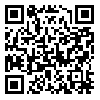Sat, Dec 27, 2025
[Archive]
Volume 6, Issue 4 (12-2014)
IJDO 2014, 6(4): 149-155 |
Back to browse issues page
Download citation:
BibTeX | RIS | EndNote | Medlars | ProCite | Reference Manager | RefWorks
Send citation to:



BibTeX | RIS | EndNote | Medlars | ProCite | Reference Manager | RefWorks
Send citation to:
Khajeh-Mehrizi R, Mozaffari-Khosravi H, Ghadiri-Anari A, Dehghani A. The Effect of Urtica Dioica Extract on Glycemic Control and Insulin Resistance Indices in Patients with Type2 Diabetes: A Randomized, Double-Blind Clinical Trial. IJDO 2014; 6 (4) :149-155
URL: http://ijdo.ssu.ac.ir/article-1-208-en.html
URL: http://ijdo.ssu.ac.ir/article-1-208-en.html
Department of Nutrition, Faculty of Health, Shahid Sadoughi University of Medical Sciences, Yazd, IranYazd Diabetic Research Center, Shahid Sadoughi University of Medical Sciences, Yazd, Iran
Abstract: (5002 Views)
Objective: Diabetes is a common endocrine disorder caused by deficiency of insulin secretion or insulin resistant. nowadays, in addition to trying to find a safe way to control diabetes, find the low side effect way is important. This study was designed to find the effect of Urtica dioica extract on glycemic control and insulin resistance in patients with type 2 diabetes.
Materials and Methods: A parallel randomized clinical trial was conducted with participating 60 patients with type 2 diabetes who met inclusion criteria were recruited. Patients were randomly assigned to receive 100mg/kg/day extract of Urtica dioica group (UG) and the other group which received placebo (PG) over an 8 weeks period. Fasting blood sugar (FBS) concentration and insulin resistance indices (insulin concentration, insulin resistance (IR), insulin sensitivity (S%) and β-cell function (β%)) were measured at baseline and end of the study. Data were analyzed using SPSS 16.0 and P<0.05 was considered significant.
Results: The mean difference of FBS in UG and PG were 20.16±52.6 mg/dl and -0.7±45.29 mg/dl (P-value=0.14) and the mean concentration of insulin in UG and PG were 2.5mU/L and 0.2mU/L (P-value=0.003), respectively, that showed a significant increase in insulin concentration in UG compared to PG and the mean IR in UG and PG were 0.3 and 0.1 (P-value=0.01) that showed a significant decrease in IR in UG compared to PG. The mean difference of β% in UG and PG were -24.16±35.07% and 1.22±18.14% (P-value=0.003), and the mean difference of S% in UG and PG were -54.72±69.3% and 1.1±74.01% (P-value=0.009), respectively that showed increase in insulin concentration, β% and S% and decrease in IR in UG compared to PG.
Conclusions: In the present study we demonstrated that consumption of 100mg/kg/day extract of U.dioica for 8 weeks did not have significant effect on FBS and it has significant effect on insulin resistance indices.
Type of Study: Research |
Subject:
Special
Received: 2015/09/28 | Accepted: 2015/09/28 | Published: 2015/09/28
Received: 2015/09/28 | Accepted: 2015/09/28 | Published: 2015/09/28
| Rights and permissions | |
 |
This work is licensed under a Creative Commons Attribution-NonCommercial 4.0 International License. |





